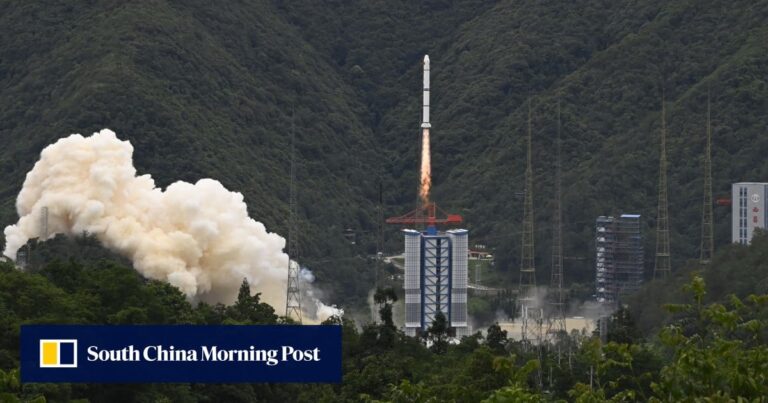“The launch of SVOM closes a loop that was started 18 years ago,” said François Gonzalez, SVOM France Project Manager at CNES.
Over the years, he said, members of the science and technology team have learned how to work together and “adapt our own methods” to advance the mission.
Although these flashes offer unique insights into major cosmic phenomena, they are notoriously difficult to capture because they can appear anywhere in the sky and only last for a few seconds.
Gonzalez said SVOM will observe at a range of wavelengths, allowing it to obtain “the most complete data set” showing how the explosions occur and how they evolve over time.
SVOM is equipped with four state-of-the-art instruments, two from France and two from China, including the French-made ECLAIR telescope, which will play a key role in the near real-time autonomous detection of bursts in the gamma-ray and X-ray energy range.
Bertrand Cordier, a French researcher at the Saclay Atomic Energy Research Centre near Paris, said coordinated observations by SVOM and large ground-based telescopes were key to understanding the explosion.
“The biggest challenge of this mission is to determine the origin of gamma-ray bursts,” says Cordier. “What environment do they come from? What era do they occur in? Only detailed analysis of gamma-ray bursts with ground-based telescopes can answer these questions.”
SVOM is expected to detect 70 to 80 gamma-ray bursts each year.
Space is a top priority for scientific cooperation between the two countries. Cooperation between the two space agencies began in 1997, when Beijing and Paris signed the Agreement on the Peaceful Uses of Outer Space.

A Sino-French oceanographic satellite launched in 2018 has helped scientists around the world make more accurate ocean forecasts and provide early warnings of severe weather.


